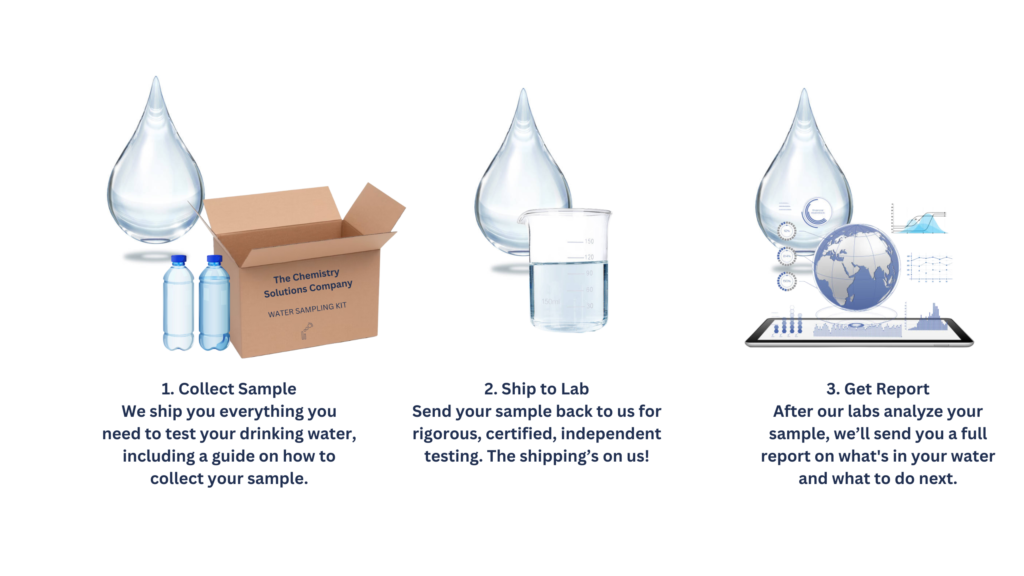
Microbiological Analysis
Samples intended for microbiological analysis need to be collected in sterile bottles. Where sterile bottles are not available representative microbiological samples can still be collected by rinsing bottles with hot water, followed by the sample. After these rinse steps proceed to fill the bottle with sample. Sample volumes of 250 mL are sufficient for Total coliform, Fecal coliforms, E. coli and heterotrophic plate count analysis.”
Chemical Analysis
- Samples must be taken from locations that are representative of the water source.
- To prevent contamination risks, ensure the sample bottle is kept closed until sampling is to occur.
- Ensure no contamination of the cap or the neck of the bottle occurs when filling the bottle.
- Avoid sampling leaking taps where water runs down on the outside of the tap.
- Pump water for at least 5 minutes before collecting samples from wells and boreholes.
- Include dead-end sections and all the different lines in the sampling programme when identifying sample locations for distribution systems.
- Never sample water from the surface, particularly when sampling from a dam or tank – hold the sample bottle near the base and plunge it downward below the surface of the water.
Chemical Testing
Sample volume:
Sample volumes of 750 mL are sufficient to carry out all analyses when requesting either drinking/potable water or irrigation water analysis.
Sample identification:
It is essential to label samples in detail in order for us to identify them. Information provided should include your order number, the sampling date, the sampling time, the origin of the sample and the type of sample submitted (borehole, well, etc.).
Sample preservation and storage:
Although recommendations may vary, the time between sample collection and analysis should not exceed 6 hours (24 hours are considered the absolute maximum). Samples should immediately be placed in an insulated, lightproof box containing melting ice packs with water to ensure rapid cooling. Sample temperatures should be kept below 10°C for a maximum transportation time of 6 hours. If ice is not available the transportation time must not exceed 2 hours. It is imperative samples are kept cool and out of light.”